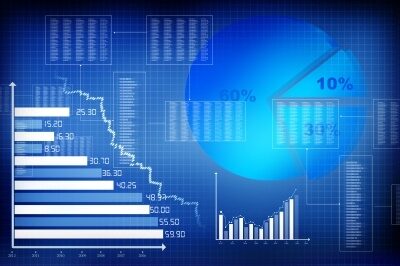
As it is well known, data analysis is a key support to make better decisions. Fundamentally, considering the current digital context in which we find ourselves and its important influence on the information systems of the institutions, now more complex. A coin with its cross and its face, because thanks to this we can take full advantage of new data sources.
The new panorama, full of challenges and possibilities, you need types of data analysis adapted to new needs, in order to facilitate the taking of data-driven decisions. In summary, it is about responding to the demands posed by different types of data, the different approaches and, fundamentally, the need for real time, decisive in several cases.
Structured vs unstructured data
Analyzes based on data obtained from hybrid systems, that include structured and unstructured data, is a significant challenge that can provide significant competitive advantages. A) Yes, design architectures based on an integrative approach will allow analysis that takes advantage of both paradigms.
The integration and unification of information sources of both types facilitates analyzes of all kinds, either to drive internal processes, to better understand the customer or to make strategic decisions, even in real time. In summary, it is about adding value to the company through analyzes that take advantage of both systems.
Qualitative vs quantitative analysis
At the same time of the nature of the data that we want to analyze, there are other decisive factors when deciding on one or another type of analysis techniques. In particular, the workload
The qualitative analysis collect data without numerical measurement to build theories, discover or refine questions, reveal situations, describe events, facts or patterns and explain them to aid decision making.
For his part, quantitative analysis seeks to test hypotheses and theories or determine patterns of behavior from a collection of data of the same type, based on numerical measurement and statistical analysis. For each of them, quantitative or qualitative data collection instruments are used., respectively.
While the former focus on observation, attitude scales, content analysis or questionnaires, qualitative instruments focus on observation, life stories, interviews, focus groups or documents.
Each of them will have their own Design of the investigation. The quantitative ones can be divided into empirical analytics (descriptive, correlational, experimental, etc.), ethnographic, study cases, historical analytics, evaluative research, collaborative or participatory, Let's say.
This is an area where there are no predetermined analysis models that must be strictly adhered to.. When verifying the quality of the research, the exchange of opinions between researchers or verification with the members is used., among other methods.
Data processing and analysis techniques
At the same time of the nature of the data that we want to analyze, there are other determining factors when selecting one or another analysis technique. In particular, the workload or the potentialities of the system to face the challenges posed by the analysis of big data with respect to storage capacity, procesamiento y mayor o menor latencia analyticsAnalytics refers to the process of collecting, Measure and analyze data to gain valuable insights that facilitate decision-making. In various fields, like business, Health and sport, Analytics Can Identify Patterns and Trends, Optimize processes and improve results. The use of advanced tools and statistical techniques is essential to transform data into applicable and strategic knowledge.....
Regarding this last aspect, Apache Hadoop is a framework designed for batch processing, even though among its rich ecosystem we find components like Spark, ideal for working together and working in real time. At the same time, can do it autonomously, constituting an interesting alternative as an immediate data analysis technique, with a marginMargin is a term used in a variety of contexts, such as accounting, Economics and printing. In accounting, refers to the difference between revenue and costs, which allows the profitability of a business to be evaluated. In the publishing field, The margin is the white space around the text on a page, that makes it easy to read and provides an aesthetic presentation. Its correct management is essential.. de menos de segundos.
The flow processing or flow is another widely used functionality within Big Data analytics, along with video, voice, geoespacial, natural language analytics, simulation, predictive modeling, optimization, data extraction and, decidedly, generation of queries and reports. In reality, when making decisions to get the most business value, a wide variety of advanced analysis can be applied.
Image source: cooldesign / FreeDigitalPhotos.net
(function(d, s, id) {
var js, fjs = d.getElementsByTagName(s)[0];
if (d.getElementById(id)) return;
js = d.createElement(s); js.id = id;
js.src = “//connect.facebook.net/es_ES/all.js#xfbml=1&status=0”;
fjs.parentNode.insertBefore(js, fjs);
}(document, ‘script’, 'facebook-jssdk'));






